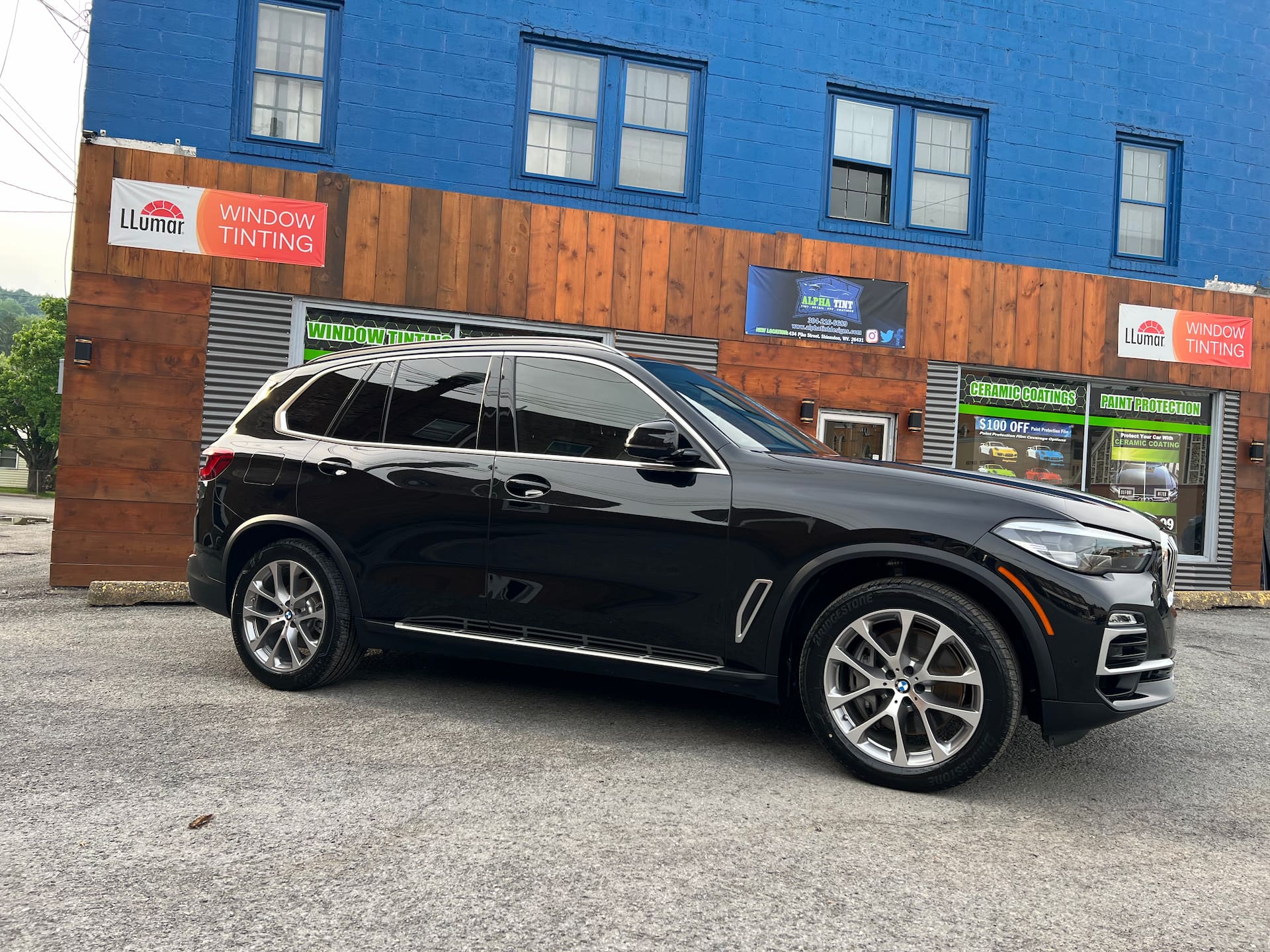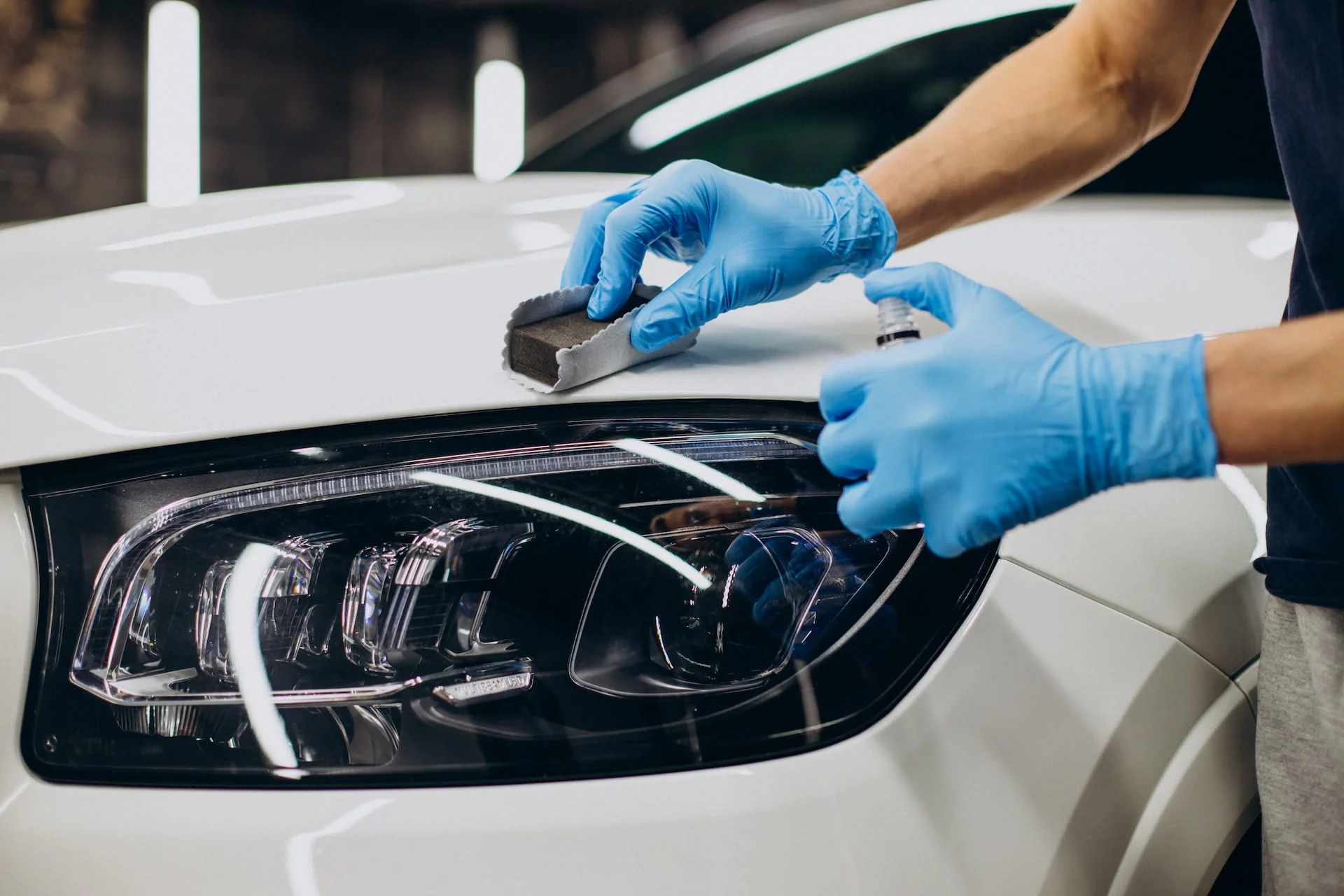When it comes to protecting your vehicle’s paint and maintaining its shine, ceramic coating is one of the best options available on the market today. The ceramic coating offers a durable and long-lasting protective layer, shielding the paint from various environmental elements. However, one common question that arises with our clients who are considering investing in a ceramic coating is how long it takes to cure. So, how long does ceramic coating take to cure? In this blog article, from the expert team at Alpha Tint and Detail Center in Shinnston, WV, we will explore the process of applying a ceramic coating, look more closely at the curing time, and provide tips on maximizing the benefits.

How is ceramic coating applied?
Before diving into the curing process, it is crucial to understand how the ceramic coating is applied. Ceramic coating is a liquid polymer that is carefully applied to the surface of the vehicle’s paint. It forms a chemical bond with the paint, creating a protective layer that is resistant to UV rays, chemicals, oxidation, and minor scratches.
The application process typically involves thorough cleaning and preparation of the vehicle’s surface. This includes washing, decontaminating, and polishing the paint to ensure a smooth and clean surface for the ceramic coating to adhere to. Once the surface is prepared, the ceramic coating is applied in a controlled and meticulous manner, usually using specialized applicators or microfiber cloths.
Read more: How Long Does Ceramic Coating Take to Apply?
What is the curing time of ceramic coating?
After the ceramic coating is applied, it enters a crucial stage known as the curing process. This process is vital for the coating to form a strong bond with the vehicle’s paint, ensuring its longevity and effectiveness. While the exact curing time can vary depending on factors such as the brand and type of ceramic coating used, as well as the surrounding temperature and humidity levels, it generally ranges from 24 to 48 hours.
During the curing period, it is absolutely crucial to handle the coated vehicle with care and take necessary precautions to maximize the bonding process. Although the ceramic coating may feel dry to the touch within a few hours of application, it is important to note that it requires ample time to fully cure and achieve its maximum protective properties.
One of the primary reasons for avoiding water, moisture, or other substances during the curing period is to prevent any interference with the bonding process. Exposure to these elements could disrupt the chemical reaction necessary for the ceramic coating to form a strong and durable bond with the paint surface. This can ultimately affect the overall performance and effectiveness of the coating.
Furthermore, while the ceramic coating is curing, it is crucial to keep the vehicle away from any potential sources of contamination. Dust, dirt, bird droppings, or other pollutants can settle on the surface and hinder the proper bonding of the coating. Therefore, it is advisable to park the vehicle in a clean and controlled environment, such as a garage or covered parking space, to minimize the risk of contamination during the curing process.
It’s important to remember that the curing time can be influenced by external factors, especially temperature and humidity levels. Higher temperatures and lower humidity levels tend to facilitate a faster curing process, while lower temperatures and higher humidity levels can prolong the curing time.
While waiting for the ceramic coating to fully cure, it’s a good idea to avoid any physical contact or friction with the coated surface. Rubbing or applying pressure on the coating can potentially damage the bonding process and compromise the effectiveness of the protection it provides. Therefore, it’s advisable to exercise caution and refrain from any activities that may put undue stress on the coated areas.
Read more: Will Ceramic Coating Cure in Cold Weather?

How to get the most from your ceramic coating
While ceramic coatings offer excellent protection, it’s still essential to maintain regular cleaning routines for your vehicle. However, it’s important to note that you should use gentle, pH-neutral car wash soaps and microfiber towels to clean the coated surface. Avoid using harsh chemicals or abrasive materials that can degrade the coating over time. Regularly washing your vehicle will help remove any dirt, dust, or contaminants that can accumulate on the surface and compromise the coating’s effectiveness.
After washing your vehicle, it’s important to use proper drying techniques to prevent water spots or streaks. Avoid air-drying your vehicle as it can leave mineral deposits on the coating. Instead, use a soft, microfiber drying towel to gently dry the surface. Pat dry rather than rubbing, as rubbing can cause micro-abrasions on the coating.
Read more: Can You Wax Over Ceramic Coating?
Premium ceramic coating services in Shinnston, WV.
If you’re interested in ceramic coating services in Shinnston, WV, don’t hesitate to reach out to Alpha Tint. You can contact us at +1 304-216-6689 or visit our convenient location at 434 Pike St, Shinnston, WV, 26431, United States. Our skilled team of detailers has extensive experience in the auto detailing industry, ensuring that your ceramic coating installation will be performed with expertise and care. Schedule an appointment with us today and give your vehicle the protection it deserves!



